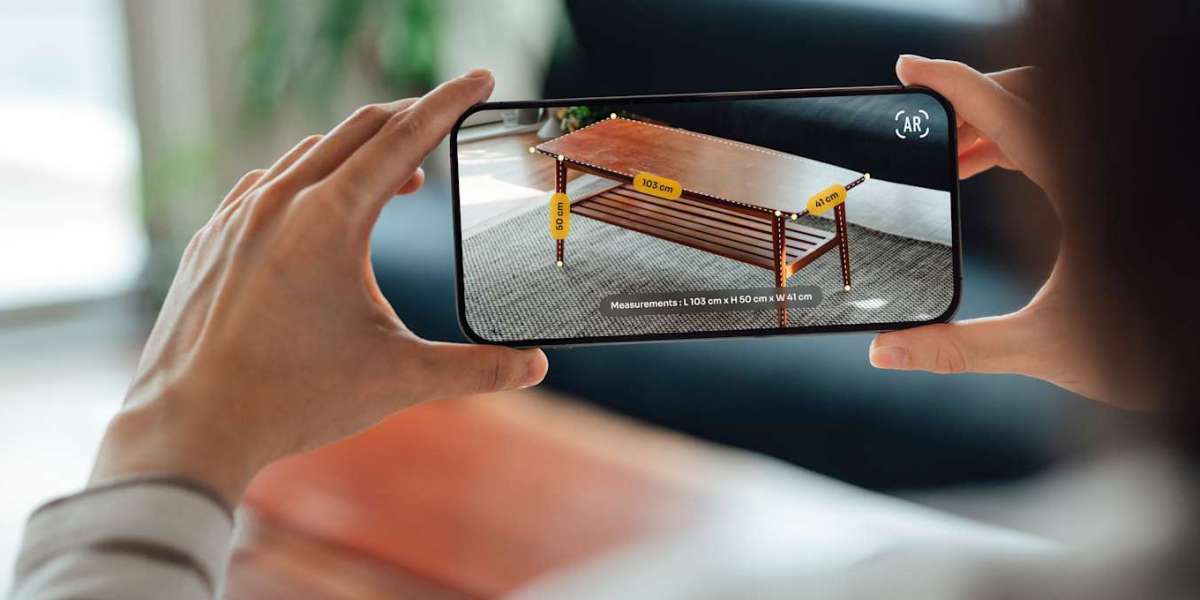Imagine pointing your phone at an empty wall and seeing a fully decorated room. Or slipping on a pair of smart glasses and receiving real-time directions as you walk through a city. These aren’t scenes from a sci-fi movie—they’re examples of how Augmented Reality (AR) is blending digital content with the real world in extraordinary ways.
AR has become one of the most exciting and transformative technologies of our time. It offers a new way to interact with information—not on screens, but overlaid onto the environments we live and work in every day. As AR continues to grow in capability and reach, it’s not just changing how we see the world—it’s changing the world itself.
What Is Augmented Reality?
At its core, Augmented Reality is a technology that superimposes computer-generated content, such as images, data, or 3D objects, onto our view of the physical world. It doesn’t replace reality like Virtual Reality does, but rather enhances it.
AR works through devices like smartphones, tablets, smart glasses, or even vehicle windshields. It uses sensors, cameras, GPS, and advanced software to recognize the real environment and overlay digital elements that align with the user’s perspective in real time.
The result? A hybrid experience where the digital and real exist side-by-side, interacting seamlessly.
Why AR Matters: More Than Just a Tech Trend
AR isn’t just a flashy feature or a novelty. It represents a fundamental shift in how we consume information, interact with technology, and understand the world around us.
Here’s why it matters:
Intuitive Interactions: AR enables more natural, visual interactions with data. Rather than reading instructions, users can see what to do.
Contextual Awareness: AR applications are location- and context-aware, offering relevant information exactly when and where it’s needed.
Enhanced Productivity: AR can streamline workflows, reduce errors, and increase engagement—especially in industries like manufacturing, logistics, healthcare, and education.
Emotional Engagement: AR creates immersive experiences that are often more memorable and emotionally engaging than flat content.
As we move further into the digital age, AR isn’t just enhancing our reality—it’s changing how we experience it.
Key Industries Being Transformed by AR
AR is revolutionizing the way we shop. Brands are using AR to help customers try products virtually before making a purchase. From testing makeup shades on your face to placing a virtual couch in your living room, AR removes the guesswork and builds buyer confidence.
Retailers like IKEA, Sephora, and Warby Parker are leading the charge with AR-powered apps that blend convenience, personalization, and novelty.
In physical stores, AR also enhances experiences by offering interactive product information, gamified promotions, and virtual sales assistance.
2. Healthcare
AR is making huge strides in healthcare by helping doctors visualize anatomy during surgery, plan procedures, and explain diagnoses to patients more clearly. Tools like Microsoft’s HoloLens are being used in hospitals to project 3D visualizations of organs or blood vessels directly onto patients' bodies during operations.
AR also plays a role in medical training, allowing students to practice procedures in simulated environments with real-time feedback. For physical therapy, AR can guide patients through exercises with on-screen instructions and monitor their form.
AR transforms passive learning into an active, engaging experience. Imagine a history class where students explore a 3D model of the pyramids, or a science lesson where the solar system hovers in the middle of the room.
AR makes abstract concepts tangible and complex information easier to digest. Educational AR apps like Merge EDU, Google Expeditions, and Anatomy 4D are giving educators exciting tools to enrich the learning environment.
4. Manufacturing & Industrial Work
AR is being used to guide workers through complex assembly or maintenance tasks with on-screen instructions projected onto machinery or parts. This reduces error rates, accelerates training, and increases efficiency.
Technicians in the field can use AR glasses to access schematics, receive real-time assistance from experts, or view step-by-step instructions while keeping their hands free.
5. Real Estate & Architecture
In real estate, AR allows prospective buyers or renters to take virtual tours of properties. Architects and interior designers can use AR to overlay plans and design elements onto physical spaces, helping clients visualize changes before they’re made.
Apps that allow users to visualize paint colors, floor plans, or furniture layouts are taking the guesswork out of property development and home improvement.
Everyday AR: It’s Closer Than You Think
Even outside of professional settings, AR is becoming part of our daily lives:
Social Media Filters: Snapchat and Instagram popularized AR face filters, adding a fun and interactive element to photo sharing.
Navigation: Apps like Google Maps offer AR walking directions, placing arrows and labels directly on your real-world path.
Gaming: Pokémon GO remains one of the best-known AR games, showing how digital characters can interact with the real environment.
Virtual Try-Ons: Many fashion and eyewear brands now offer AR try-on tools to help consumers make better choices online.
As AR gets more advanced, these everyday applications will become more intuitive, powerful, and widespread.
Challenges Ahead
Despite all its promise, AR still faces a few challenges:
Hardware Barriers: Smart glasses and headsets are still relatively expensive and bulky. Mass adoption will depend on more lightweight, stylish, and affordable devices.
Privacy Concerns: Because AR devices often rely on constant video input and spatial mapping, they raise important questions about data privacy and surveillance.
Content Creation: Creating compelling, accurate, and useful AR content takes time and skill. There’s still a learning curve for developers and designers.
Battery Life & Processing Power: AR experiences require significant processing power, which can drain device batteries quickly. Future devices will need to be more energy efficient.
These obstacles aren’t insurmountable—but solving them will be key to unlocking AR’s full potential.
The Future: A Seamless Digital Layer
As AR evolves, we’re moving toward a world where digital content doesn’t just live in apps or on screens—it exists all around us. Here’s what we can expect in the near future:
Always-on AR: AR glasses that provide a constant stream of helpful information—like a virtual assistant overlaying your world.
Persistent AR: Digital objects or notes that remain anchored in physical locations. Leave a message on a colleague’s desk, and it’ll be there next time they look.
AI + AR Integration: AR systems will become more intelligent, understanding context and making suggestions before you even ask.
We’re entering a world where reality itself is layered with meaning, insight, and interaction.
Conclusion: A New Kind of Reality
Augmented Reality is more than a technology—it’s a shift in how we interact with information and experience the world. By blending the digital with the real, AR is enhancing everything from how we learn and shop to how we heal and work.
As the tools and infrastructure behind AR continue to improve, it will become as ubiquitous and essential as smartphones are today. The boundary between the physical and the digital is dissolving, and in its place is a new kind of reality—richer, smarter, and more connected.


